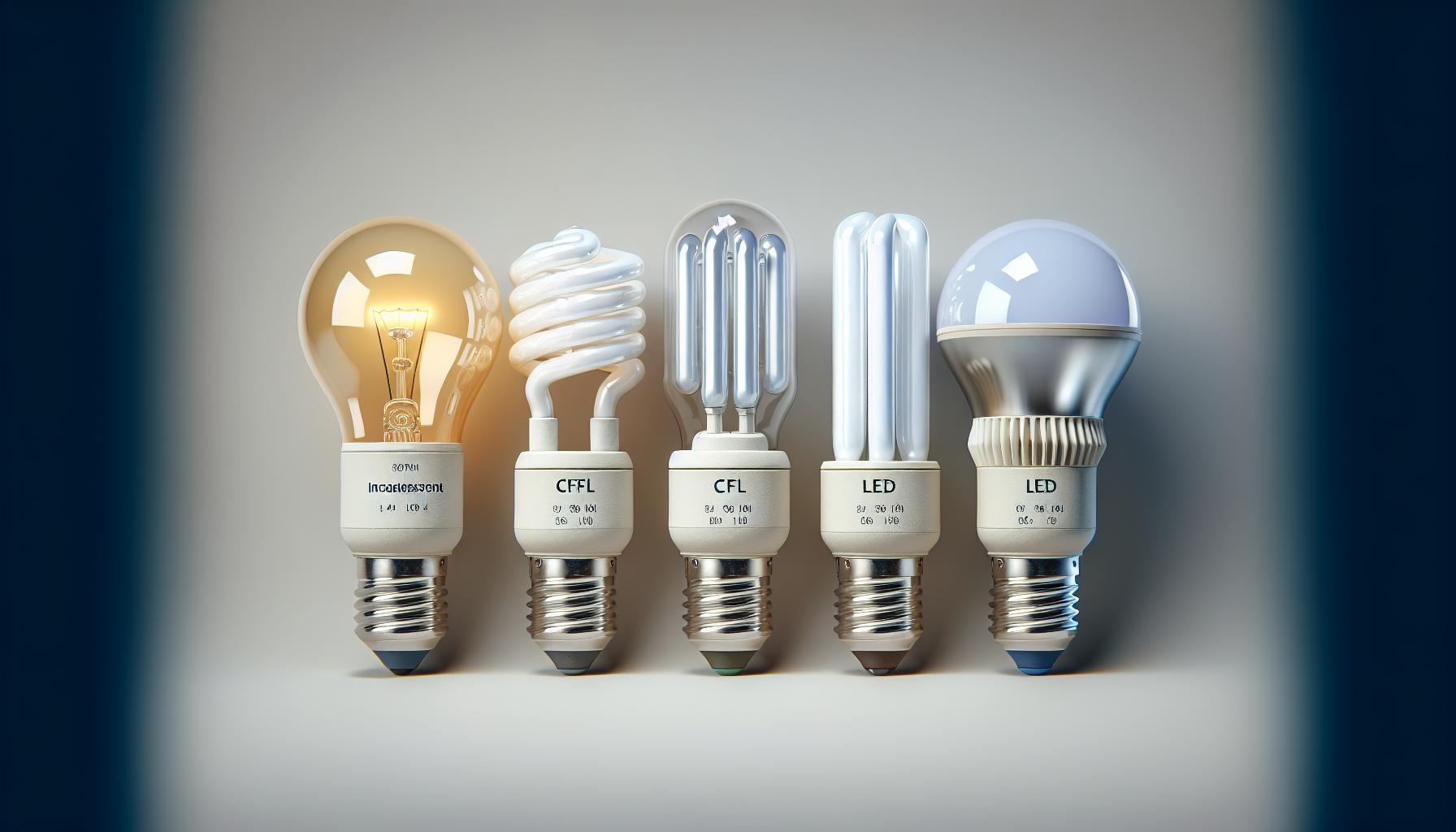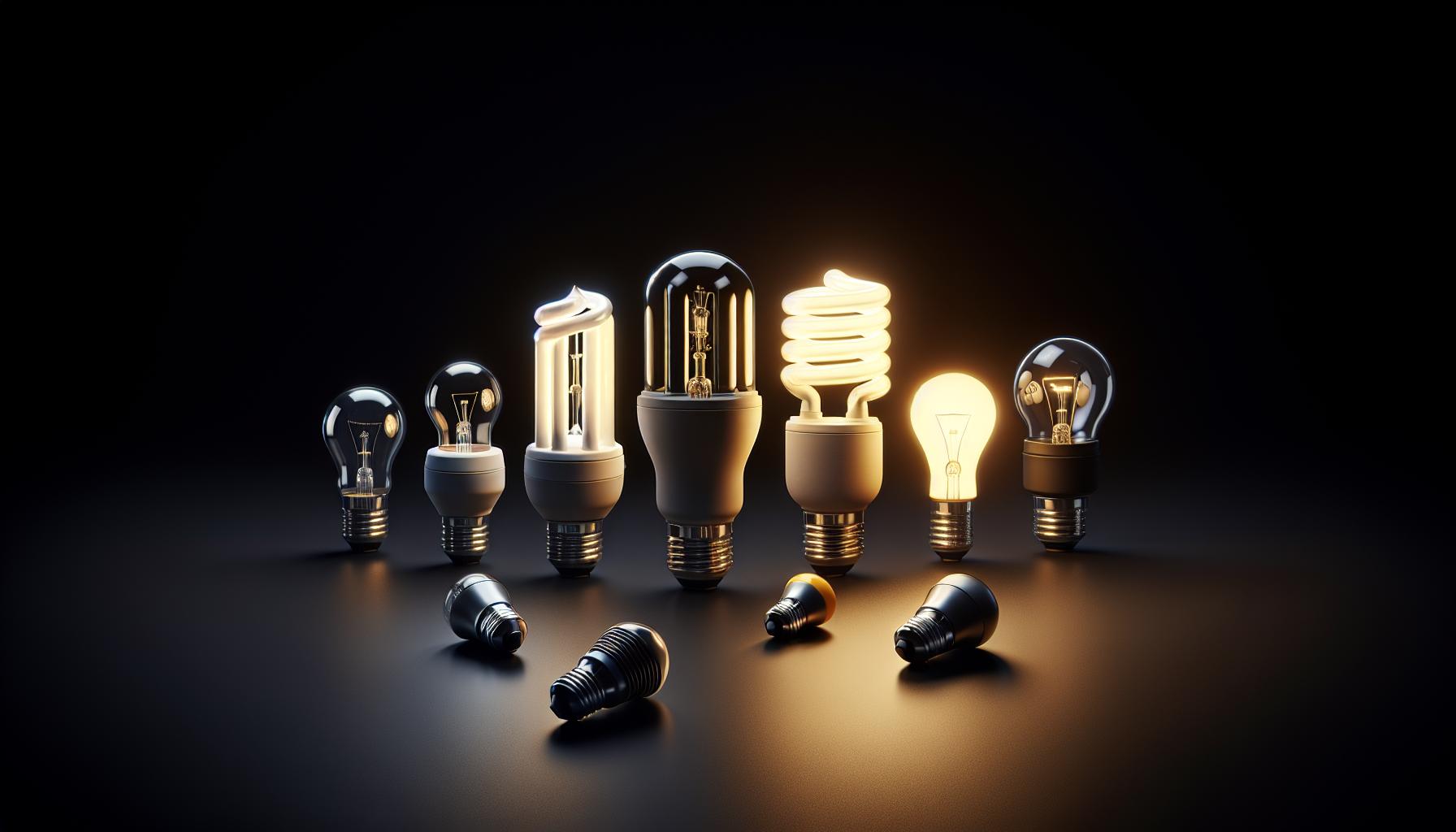Ever found yourself in the dark, quite literally, when a bulb fizzles out with a soft pop? It’s a common household hiccup that sends you fumbling for the light switch, only to remember that, oh right, the bulb’s kaput. But have you ever stopped to wonder what’s actually going on when your trusty light source calls it quits?

Bulbs don’t last forever, and when they burn out, it’s not just a nuisance—it’s a little science in action. From the moment you flip the switch to the bulb’s final flicker, there’s a whole process that unfolds, often unnoticed. Let’s shed some light on the mystery behind a burned-out bulb and what it means for you and your cozy, well-lit nook.
The Life of a Light Bulb
You’ve likely swapped out a few light bulbs in your time, but have you ever considered the journey each bulb takes before it meets its inevitable end? The tale of a light bulb is more remarkable than you might think.
From the moment a new light bulb is screwed into a socket, it embarks on a journey of illumination that can span years. Incandescent bulbs, once the standard, typically shine for about 750 to 2,000 hours before burning out. CFLs (compact fluorescent lamps) are a bit heartier, boasting a life expectancy of around 8,000 to 10,000 hours. However, LEDs (light-emitting diodes) raise the bar significantly, lasting for an impressive 20,000 to 25,000 hours.
| Bulb Type | Lifespan |
|---|---|
| Incandescent | 750 – 2,000 hours |
| CFL | 8,000 – 10,000 hours |
| LEDs | 20,000 – 25,000 hours |
The lifespan of a bulb is a testament to human ingenuity. It’s a careful dance of materials, design, and technology—each element playing a crucial role in how long and well your bulb shines. As you bask in the warm glow of your favorite reading lamp, spare a thought for the meticulous planning that went into crafting that tiny source of light.
In your DIY home projects, you’ve likely marveled at how lighting can transform a space. The right bulb not only brightens a room but sets the mood and helps define the space’s purpose. As an enthusiast, you understand the importance of selecting the right bulb for the task at hand, whether it’s for intricate work in your home workshop or creating a cozy atmosphere in the living room.
Just as you plan your projects, a bulb’s life is planned from the get-go. Manufacturers calculate estimated lifespans through rigorous testing and quality control. These tests account for average use—turning on and off, withstanding temperature changes, and enduring the voltage fluctuations within your home’s electrical system.
The Anatomy of a Light Bulb

You might not think about it every time you flick a switch, but each light bulb in your home is a result of intricate design and engineering. Let’s peel back the layers and illuminate the anatomy of a typical incandescent bulb—you’ll gain a new appreciation for these everyday wonders.
At the heart of an incandescent bulb is the filament. This is the part that gets white-hot and produces light. Typically made of tungsten, the filament has a double life: it has to be thin enough to heat up quickly but sturdy enough to withstand high temperatures over time.
Surrounding the filament is the bulb chamber, which is filled with an inert gas like argon. Why gas? Oxygen is left out to avoid a fiery end for your filament, as pure oxygen would cause it to burn up in a bright, brief spectacle—not ideal for your reading lamp.
Then there’s the glass enclosure, one of the most recognizable features. This not only protects the interior components from external elements but also ensures the soft diffusion of light into your living space. The shape isn’t just for looks; it influences how light is cast and can even affect mood and productivity.
Hold the bulb up to light and you’ll see the base, usually made of aluminum or brass. This is where the magic starts, as the base connects the electricity from your home to the bulb’s internal components.
And don’t overlook the understated, yet crucial, insulating stem. This component keeps the filament in place and ensures electrical connections are insulated from the metal base.
Next time you’re in the hardware store, thinking about color temperature and wattage, spare a thought for the science and craftsmanship nested within each bulb. With each twist into a socket, you’re completing a circuit of history, stretching back to the days of Edison and Swan.
How Light Bulbs Work
« Do Light Bulbs Have a Warranty? Unveil the Truth & Maximize Your Purchase
Are LED Light Bulbs Bright? Discover the Perfect Glow for Your Home »

As you continue your exploration into the world of light bulbs, it’s time to shine a light on the intricacies of how they operate. Understanding this is key, especially if you love tinkering with home DIY projects.
Incandescent bulbs, the most common type, produce light when electricity heats a tungsten filament to a temperature that causes it to glow. The filament is enclosed in a glass bulb that’s either vacuum-sealed or filled with an inert gas, like argon, to prevent the filament from burning out too quickly.
Compact fluorescent lamps (CFLs), on the other hand, contain a small amount of mercury vapor. When electricity runs through the vapor, it produces ultraviolet light. This light then excites a phosphor coating on the inside of the bulb, emitting visible light.
Moving on to LED bulbs, these are a bit more complex. They work by passing an electrical current through a microchip, which illuminates tiny light sources we call LEDs, and the result is visible light. Not only are LED bulbs energy-efficient but they also last substantially longer than traditional incandescent bulbs.
Here’s a quick comparison of how long each bulb type lasts on average:
| Type | Average Lifespan |
|---|---|
| Incandescent | 750-2,000 hours |
| CFLs | 8,000-20,000 hours |
| LEDs | 25,000-50,000 hours |
Your home is your stage, and selecting the perfect light bulb is akin to choosing the right props. Illuminate your workspace with the clear, bright light of LEDs, set a warm, inviting tone in your living room with the soft glow of CFLs, or bask in the familiar comfort of incandescent lights in your bedroom. The choice affects not only the ambiance but also the performance and longevity of your lighting solutions.
Let’s not forget the colour temperature, measured in Kelvin, affects the light’s appearance. Bulbs with a lower Kelvin value emit a warmer, more yellow light, while those with higher Kelvin values produce a cooler, bluer light perfect for task lighting.
While you’re making your next lighting choice, consider the room’s purpose, the desired mood, and the colour temperature that will best complement the space.
Why Light Bulbs Burn Out

You’ve probably been through the annoyance of flicking a switch and not being graced by that immediate warm or cool glow. Bulbs tend to burn out, and there’s science behind why they give up the ghost. All bulbs, from your old-school incandescent to the latest LEDs, have finite lifespans, but the culprits behind their burnout can differ vastly.
Incandescent bulbs, the kind you might nostalgically remember from your childhood, burn out when the filament inside eventually wears out. This thin wire gets incredibly hot, glowing bright to light up your room. However, this scorching temperature causes the metal to slowly evaporate and thin out until it can no longer carry an electrical current.
CFLs have a different tale of demise. These bulbs contain a gas that produces ultraviolet light when excited by electricity. This UV light then hits a special coating inside the bulb to produce visible light. Over time, the components inside a CFL can break down—particularly the electronic ballast, which regulates power to the bulb. This breakdown leads to the bulb’s eventual failure.
Lastly, LEDs—your high-efficiency friends that seem to last forever—don’t actually burn out in the traditional sense. Instead, they experience what’s known as “lumen depreciation”; their light output diminishes over time. Heat is a significant factor in the lifespan of an LED; poor heat dissipation can cause the semiconductor material to degrade, leading to dimmer light until it’s no longer useful.
Selecting the right bulb, as you know, is more than just about brightness and savings. It’s also about understanding the workhorse you’re putting in place and its inherent limitations. Here are typical lifespans for each bulb type:
| Bulb Type | Average Lifespan |
|---|---|
| Incandescent | 750-2,000 hours |
| CFL | 8,000-10,000 hours |
| LED | 25,000-50,000 hours |
What you might not know is that voltage fluctuations can also burn out bulbs. A sudden surge of power can blow your light bulb instantly. That’s why some folks use surge protectors, even for their lighting. It’s not just electronics that need protecting from the whims of your home’s electrical currents.
What Happens When a Light Bulb Burns Out

Imagine you’ve settled in for a cozy evening, and suddenly the room goes dark. Your trusty light bulb has burned out. But what exactly happens in those last moments of a light bulb’s life?
First, let’s talk about Incandescent Bulbs. The demise of an incandescent bulb can be rather dramatic. The filament, worn thin by constant heating and cooling, eventually becomes brittle enough to break. When it does, it often results in that characteristic pop. This break in the filament disrupts the electrical circuit, casting you into darkness.
With CFLs (Compact Fluorescent Lamps), it’s a bit less theatrical. These bulbs work differently, using an electric current to excite gas inside the bulb, creating ultraviolet light that then excites a fluorescent coating on the inside of the tube. When they burn out, it’s usually a sign the gas isn’t able to conduct electricity or the coating has degraded. Instead of a pop, you might notice the bulb cycling on and off or emitting a dim glow before it ceases to light.
Moving on to LED Bulbs, their burnout is even less conspicuous. LEDs operate via a semiconductor that emits light when an electric current passes through it. Over time, the light output diminishes due to what experts call “lumen depreciation.” Instead of ceasing to function abruptly, LEDs gradually fade away, slowly dimming until they no longer provide sufficient light.
In addition to burnout, sometimes bulbs stop working due to what’s called Voltage Fluctuation. Power surges can overwhelm the delicate components of a bulb. That’s why you’ll often find that a power outage or lightning strike precedes bulb failure.
- Incandescent bulbs often pop due to filament breakage.
- CFLs cycle or dim before dying, possibly due to gas or coating issues.
- LEDs fade gradually over time, a symptom of lumen depreciation.
- Voltage fluctuations can cause immediate failure in all bulb types.
Ensure your bulbs last their expected lifetimes by choosing the right type for your needs and providing them with a steady electrical current, maybe even considering a surge protector. After all, light bulbs are the silent sentinels of our nightly endeavors, and understanding their life cycle can help you navigate the inevitable when the lights go out.
Conclusion
So there you have it! Now you’re armed with the knowledge of why light bulbs burn out and how you can get the most out of them. Remember that the right bulb can make all the difference in both longevity and performance. Be sure to match the bulb to the task and keep a steady flow of electricity to avoid premature burnouts. With this insight, you’ll not only save time but also money by reducing the frequency of replacements. Here’s to lighting up your space efficiently!
Frequently Asked Questions
What is the average lifespan of different types of light bulbs?
The average lifespan for incandescent bulbs is about 1,000 hours, for CFLs (Compact Fluorescent Lamps) it’s about 8,000 hours, and for LEDs (Light Emitting Diodes), it can surpass 25,000 hours.
How do manufacturers determine the lifespan of a light bulb?
Manufacturers determine the lifespan through extensive testing and quality control measures, simulating typical usage to produce estimated lifespans for their bulbs.
What are the main components of a light bulb?
The main components of a light bulb are the filament, the bulb chamber, the glass enclosure, the base, and the insulating stem.
Why do light bulbs burn out?
Light bulbs burn out due to a variety of reasons, including filament wear out in incandescent bulbs, electronic component failure in CFLs, and degradation of semiconductors in LEDs.
Can voltage fluctuations affect the lifespan of light bulbs?
Yes, voltage fluctuations can shorten the lifespan of light bulbs. Using surge protectors can help protect lighting from inconsistent electrical currents.
Why is it important to select the right bulb for different tasks?
Selecting the right bulb for different tasks is crucial because each bulb type offers different benefits and lifespans, affecting efficiency and replacement frequency in various applications.




